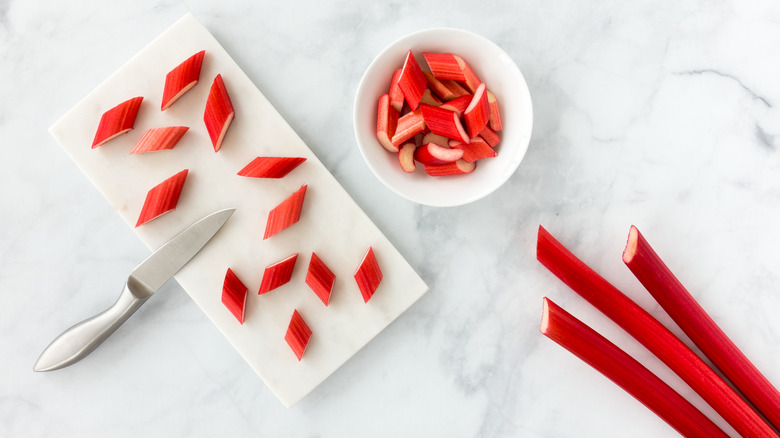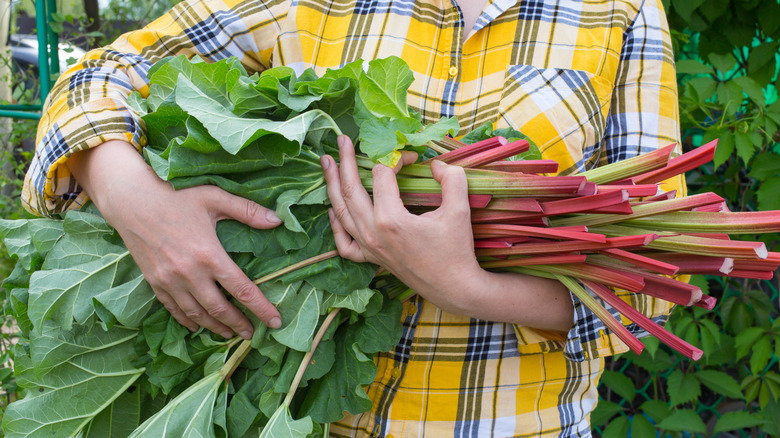The Downsides Of Eating Too Much Rhubarb
With its tart taste and pink, celery-looking stalks, rhubarb has long been a staple within produce sections, farmers' markets, and backyard gardens. Although it's considered a vegetable, rhubarb is often used alongside sweet fruits that pair well with its sharply sour flavor. Strawberry and rhubarb pie, for example, is a popular dessert that many know and love. Its tartness also lends itself well to jams or salads and can even be used to jazz up a cocktail (via My Recipes).
In addition to its versatility in the kitchen, rhubarb is also associated with a variety of health benefits. According to WebMD, rhubarb can help lower both bad and total cholesterol levels. Thanks to the fiber and tannins found in rhubarb, it can also balance your gut health, providing relief from both constipation and diarrhea.
Research into the chemical components found in rhubarb has also been shown to benefit your health and well-being. A 2016 study published in the International Journal of Pharmaceutical Sciences Review and Research reported that rhubarb is abundant in disease-fighting antioxidants and also contains impressive anti-inflammatory properties.
Keep this in mind before eating rhubarb
As healthy and delicious as rhubarb can be, there are a few downsides you need to be aware of before consuming it. The leaves of rhubarb have been known to be extremely toxic thanks to a concentration of oxalic acid, according to Fix. Because of this, grocery stores usually sell it without the leaves but if you grow your own, take care to remove them before consuming.
Too much oxalic acid can cause diarrhea, vomiting, and in very rare cases, even death (via Healthline). But according to Fix, you'd have to eat at least 10 pounds of rhubarb leaves before they begin to negatively affect your health.
While oxalic acid is mostly concentrated in the leaves of rhubarb, the stalks contain it as well. When consuming rhubarb, you can certainly opt to eat it raw, but you may want to consider cooking it first. Healthline suggests this can reduce oxalic acid levels up to 87%.


